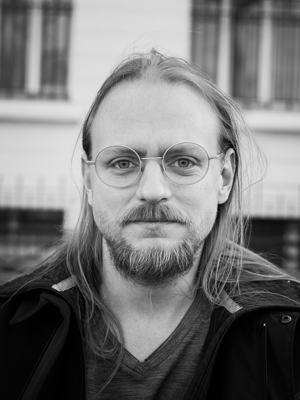Creating software for citizen science
Posted on 27 September 2022
Creating software for citizen science
 Photo by NASA on Unsplash
Photo by NASA on UnsplashBy SSI Fellow Bastian Greshake Tzovaras.
Citizen science is a broad umbrella term that applies to research which is being done either totally or partially by non-professional or amateur scientists. As such it is highly cross-disciplinary, and famous examples of citizen science can be found in domains as diverse as astronomy, molecular biology, ecology, environmental monitoring, the social sciences and even medical research. While citizen science in a way predates our connected software age – Charles Darwin could be considered an early citizen scientist after all – it has gained substantial popularity in recent years as software-facilitated citizen science projects can now easily rely on volunteers from all around the world thanks to the internet.
Co-creating software with and for citizen scientists
In my own work I am particularly interested in co-created citizen science projects that are designed by, with and for the final end user – that is the citizens which end up spending a lot of time with those tools to answer scientific questions. For me this goes all the way back to 2011, when my friend Philipp Bayer and I started openSNP, an open data repository for personal genomes that we launched based on my interest in releasing my own genetic data under an open license. In response to this open need we designed and implemented an online platform to aggregate such genetic data donations using a wide range of existing open source tools, but also releasing everything we do as open source software as well. By now nearly 6,500 data sets have been made available like this and they have been used in numerous academic publications.
A similar success story comes from a project I did together with community members of the Open Humans community, which brings together people interested in self-quantification and self-research, that is answering personal questions typically related to health. Based on a loose community brainstorming at the beginning of the COVID-19 pandemic, we decided to start working on Quantified Flu. In the process we came up with a web-tool that allows individuals to collect data like resting heart rate, respiratory rate or body temperature and combine it with daily symptom reports, to enable each user to investigate whether the physiological data shows early warning signs of infections. By again making use of open source practices, the community could not only design the research protocol, but actively participate in the implementation by contributing code and even a mobile application. This allowed us to rapidly iterate and implement the project, as well as having a huge benefit in terms of improving the fit with user needs: dropout amongst users of mobile health applications can be as high as 98% after a single use. In contrast, with Quantified Flu over 50% of all users used the platform for more than 3 months (and many even still report their symptoms daily to this day!).
To me these examples speak to the power of openly co-creating software for citizen science and I look forward to continuing this work on future projects, such as the AutSpaces project at the Alan Turing Institute. And of course to bring this approach to more researchers that engage in citizen science methodologies for their research. The chances for this are good, as the European Citizen Science Association is holding its conference at the beginning of October in Berlin, beyond just showcasing our success stories this will provide a great opportunity to advocate for more open software practices. And who knows, maybe see some of you there?

